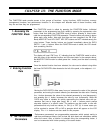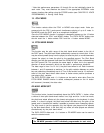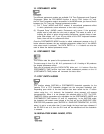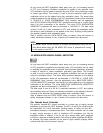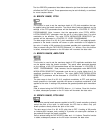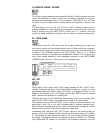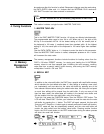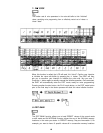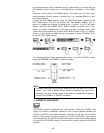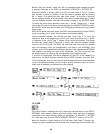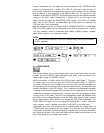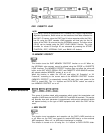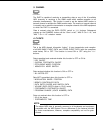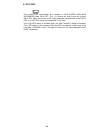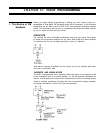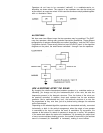
for convenience and ease of selection during a performance, you would use the
EDIT BANK function to place your 10 required voices in locations 1—10 in BANK
A.
There are 4 entire banks in the BANK memory. This means you can have 4 per-
sonally-arranged 24-voice groups to choose from, i.e., separate BANK for each
set in a performance.
To enter the EDIT BANK function, press the FUNCTION button, followed by the
EDIT BANK button. The LCD will respond with “Edit BANK?” Reaffirm your in-
tention to complete the process by pressing the +1 button. The LCD will again
respond, this time with “BANK? (A-D).” Select a BANK for editing, and in suc-
cession the button corresponding to the voice you want to change. Now, select
a new voice for that position by using the DATA ENTRY slider or the -1/+1 buttons.
Finally, you may select an additional voice to change, or press INTERNAL PLAY
to exit the EDIT BANK function.
The following diagram shows approximately where in the DATA ENTRY control
range the INTERNAL and PRESET voices are located.
NOTE:
The BANK memories are not actually loaded with the voice data, but the voice
number. Thus, when a BANK memory location is selected, the voice corre-
sponding to the voice number stored in that location is called from its memory
in either the INTERNAL or PRESET memories.
9:
CASSETTE SAVE/VERIFY
This function actually incorporates two “sub-functions”: SAVE and VERIFY. After
calling this function, subsequent presses on the 9 button alternate between the
SAVE and VERIFY sub-functions. Normally, however, you will start with the SAVE
function, which saves the entire contents of the DX27’s INTERNAL voice memory
onto cassette tape. The VERIFY function is then used to check the saved data against
the data still in INTERNAL memory, to ensure that no errors occured in the SAVE
process.
19



